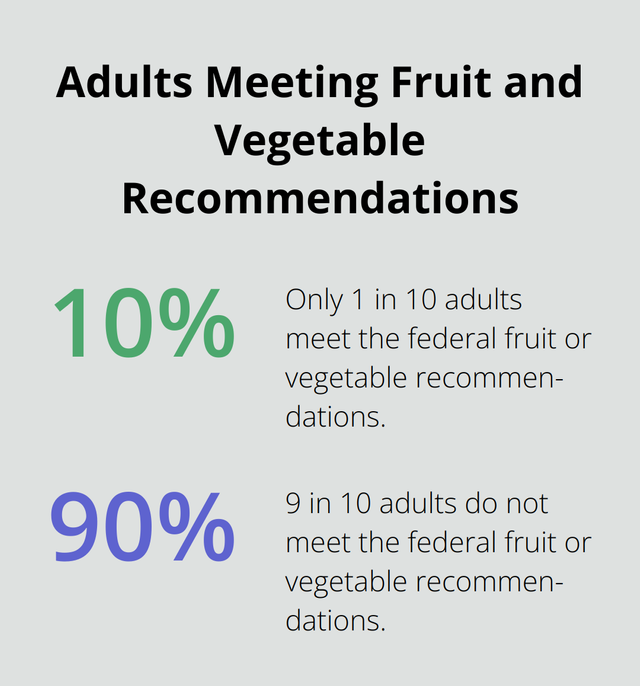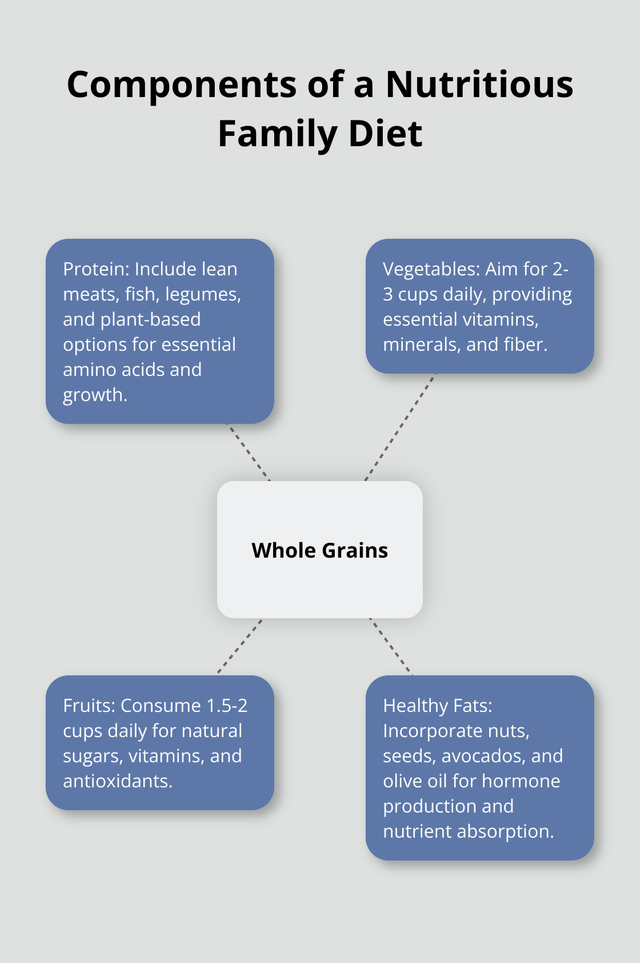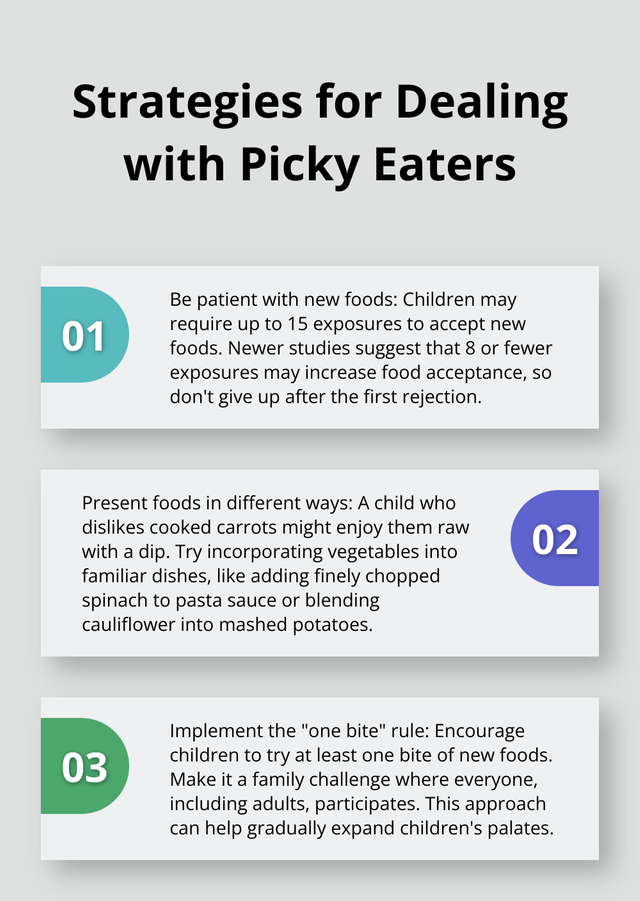Healthy Eating Plan for Families: A Complete Guide
#HealthyFamilyMeals
#FamilyNutritionPlanning
#HealthyEatingHabits
#KidsNutrition
#MealPlanningTips
#FamilyDiet
#HealthyRecipesForFamilies
#ChildhoodObesityPrevention
#WholeFoodNutrition
#FamilyWellness
At the bottom of this post are links to My Story, My Products, Information about my website and My Home Page as well as additional posts about Health related topics.
At Healthy Retirement Strategies, we understand that a healthy eating plan for families is essential for long-term well-being.
Proper nutrition not only fuels our bodies but also sets the foundation for lifelong healthy habits.
In this guide we'll explore practical strategies to create a balanced family meal that caters to all ages and preferences.
Why Family Nutrition Matters
The Foundation of Well-being
A healthy family diet forms the cornerstone of overall well-being, influencing everything from physical health to emotional stability. Proper nutrition can transform lives, not just for retirees, but for entire families.
The Ripple Effect of Healthy Eating
When families eat well together, the benefits extend far beyond the dinner table. Children who grew up with nutritious meals often maintain healthy eating habits into adulthood. A study suggests that families' mealtimes may act as a protective factor for many nutritional health-related problems during childhood and adolescence. - https://pmc.ncbi.nlm.nih.gov/articles/PMC3387875/
Overcoming Nutritional Hurdles
Families face significant challenges in maintaining a healthy diet. The U.S. Bureau of Labor Statistics reports that on average, 61 percent of Americans engage in food preparation on weekdays and weekend days. This time constraint often results in a reliance on processed foods and takeout meals typically high in calories, sodium and unhealthy fats.
Practical Goal Setting for Family Health
Setting realistic nutrition goals proves essential for long-term success. Families can start small by cooking at home one extra night per week. The American Health Association notes that home-cooked meals generally contain fewer calories, smaller portions, and less fat and sodium than restaurant meals.
Another achievable goal involves introducing one new vegetable to the family's diet each week. The Centers for Disease Control and Prevention (CDC) reports that only 1 in 10 adults meet the federal fruit or vegetable recommendations. Gradual expansion of the family's palate sets the stage for a more diverse and nutritious diet.
The Power of Family Meals
Regular family meals offer benefits beyond nutrition. Research from the National Center on Addiction and Substance Abuse at Columbia University indicates that children who eat dinner with their families at least five times a week are less likely to develop poor eating habits, weight problems, or alcohol and substance dependencies later in life.
As we move forward, we'll explore the essential components of a balanced family meal plan, providing practical strategies to incorporate these elements into your daily routine.
Building Blocks of a Nutritious Family Diet
A balanced family meal plan forms the cornerstone of good health. Understanding the key components of nutrition proves essential for families of all ages. Let's explore the essential elements that should be part of every family's daily diet.
Protein Power
Protein is essential for growth, repair, and overall health. The American Heart Association recommends about 68 grams of protein daily for a 190-pound adult. For families, this translates to incorporating a variety of protein sources into meals. Lean meats like chicken and turkey provide essential amino acids with less saturated fat. Fish, particularly fatty fish like salmon, offers heart-healthy omega-3 fatty acids. (The American Heart Association suggests eating fish at least twice a week). - https://www.heart.org/en/news/2018/07/27/when-it-comes-to-protein-quality-is-more-important-than-quantity
For plant-based options, legumes are nutritional powerhouses. A cup of lentils provides 18 grams or protein and is rich in fiber. Tofu and tempeh are versatile soy-based proteins that families can easily incorporate into meals. The key is variety - mix and match these protein sources throughout the week to ensure a well-rounded diet.
Carbohydrates: The Right Kind Matters
Carbohydrates often get a bad rap, but they're essential for energy. The trick is choosing the right types. Whole grains should be the go-to choice. The Dietary Guidelines for Americans recommend that at least half of all grains consumed should be whole grains. This means opting for brown rice over white, whole wheat bread instead of refined, and experimenting with ancient grains like quinoa or barley.
Fruits and vegetables are carbohydrate sources that pack a nutritional punch. The Centers for Disease Control and Prevention (CDC) advises adults to consume 1.5-2 cups of fruit and 2-3 cups of vegetables daily. For families, this could mean adding a fruit to breakfast, a vegetable side to lunch, and two vegetables with dinner.
Healthy Fats: Not All Fats Are Created Equal
Fats are important for hormone production, nutrient absorption, and brain health. The key is focusing on healthy fats. Nuts and seeds are excellent sources of healthy fats and make great snacks. Just a handful of almonds (about 1 ounce) provides 14 grams of healthy fats.
Avocados are another fantastic source of healthy fats. One medium avocado contains about 21 grams of healthy fats. It's versatile too - spread it on toast, add it to smoothies, or use it as a base for creamy sauces.
Olive oil should be a staple in every family's kitchen. It's rich in monounsaturated fats and antioxidants. The Mediterranean diet, known for it's health benefits, heavily features olive oil. Use it for cooking, in salad dressings, or as a finishing oil on dishes.
The Rainbow of Vitamins and Minerals
Vitamins and minerals are essential for numerous bodily functions. The easiest way to ensure adequate intake is to "eat the rainbow." Different colored fruits and vegetables provide different nutrients. For instance, orange and yellow produce like carrots and sweet potatoes are rich in beta-carotene, while leafy greens provide iron and folate.
The USDA's MyPlate guide recommends making half your plate fruits and vegetables at each meal. This visual guide can help families ensure they're getting a variety of nutrients. Frozen fruits and vegetables are just as nutritious as fresh and can be more convenient for busy families.
Implementing these components into your family's diet doesn't have to be complicated. Start by making small changes, like swapping out refined grains for whole grains or adding an extra serving of vegetables to dinner. These small changes can lead to significant improvements in your family's overall health and well-being. Now that we've covered the essential building blocks of a nutritious family diet, let's explore practical strategies for putting these principles into action in your daily life.
How to Make Healthy Eating a Family Habit
Master the Art of Meal Planning
Meal planning was associated with a healthier diet and less obesity. Dedicate 30 minutes each week to plan your meals. Use a physical calendar or a meal planning app to organize your ideas. Try to plan at least five dinners per week, leaving room for flexibility. - https://pmc.ncbi.nlm.nih.gov/articles/PMC5288891/
Consider your schedule when planning. Choose quick meals like stir-fry or slow cooker recipes for busy days. Plan more elaborate dishes that the whole family can help prepare for less hectic evenings.
Batch cooking transforms meal preparation for busy families. Spend a few hours on Sunday to prepare large portions of staples like brown rice, grilled chicken, or roasted vegetables. Mix and match these throughout the week for quick, nutritious meals.
Involve Kids in the Kitchen
Children who help prepare meals are more likely to try new foods. Assign age-appropriate tasks to your kids. Younger children wash vegetables or tear lettuce for salads. Older kids can help measure ingredients or even take charge of preparing simple dishes.
Turn grocery shopping into a family activity. Let each family member choose a new fruit or vegetable to try each week. This expands their palate and teaches then about different foods and their nutritional value.
Create a family cookbook together. Add a new recipe that everyone enjoyed each week. This builds a collection of healthy, family-approved meals and creates a sense of ownership over the family's eating habits.
Rethink Your Snack Strategy
Snacks often derail healthy eating plans. Combat this by preparing healthy snacks in advance. Cut up vegetables and store them in clear containers at eye level in the fridge. Pair them with hummus or Greek yogurt dip for a satisfying crunch.
Make your own trail mix with a variety of nuts, seeds and a small amount of dried fruit. Portion it into small containers for grab-and-go snacks. This provides a good balance of protein, healthy fats and natural sugars.
Smoothies pack in nutrients effectively. Freeze individual portions of spinach, berries, and banana in bags. Blend with Greek yogurt or milk i the morning for a quick, nutritious breakfast or snack.
Navigate Picky Eating with Patience
Dealing with picky eaters requires persistence and creativity. Children can require up to 15 exposures to accept new foods, but newer studies suggest that 8 or fewer exposures may increase food acceptance. (Don't give up after the first rejection).
Present foods in different ways. A child who dislikes cooked carrots might enjoy them raw with a dip. Or, incorporate vegetables into familiar dishes. Add finely chopped spinach to pasta sauce or blend cauliflower into mashed potatoes.
Implement the "one bite" rule. Encourage children to try at least one bite of new foods. Make it a family challenge where everyone, including adults participates.
Avoid forcing or bribing children to eat certain foods as this can create negative associations. Instead, lead by example. When children see parents enjoying a variety of healthy foods, they're more likely to follow suit.
What we did when I was growing up
Growing up, dinner time meant everyone around the table together - no exceptions. We didn't have a microwave cluttering the counter or a pantry stuffed with processed snacks. Fast food was a foreign concept, and since video games weren't glued to our hands, we weren't mindlessly munching our way through bags of chips. Those family meals taught us what real food looked like, and honestly, I think that's why eating well still feels natural to me today.
Final Thoughts
A healthy eating plan for families requires patience, creativity, and commitment. We focus on balanced nutrition, meal planning, and family involvement in food-related activities to set the stage for lifelong healthy habits. Small changes lead to significant improvements over time, so we encourage you to start with more whole foods, new recipes, and family mealtimes.
Shared meals foster stronger family bonds, improve communication, and create lasting memories. Children who grew up with nutritious eating habits make better choices as adults, potentially reducing their risk of chronic diseases later in life. The benefits of a family-focused healthy eating plan extend far beyond physical health.
We at Healthy Retirement Strategies understand that a healthy lifestyle matters at every life stage. We provide valuable insights and practical advice to help you achieve a vibrant and fulfilling life. For more information on maintaining your health naturally (and substantially), visit our website for resources on nutrition, exercise, and overall well-being.
Explore More:
Products -https://healthyretirementstrategies.blogspot.com/p/products_20.html
My Weight Loss Story -https://healthyretirementstrategies.blogspot.com/p/my-story.html
Home Page - https://healthyretirementstrategies.blogspot.com/ - Check out posts related to Weight Loss, Weight Lifting, Rucking, Healthy Eating, Exercise to Prevent Decline, Dealing with Aging, Looking at the Past and Thriving in Retirement
Information about myself and my website -https://healthyretirementstrategies.blogspot.com/p/information-regarding-myself-and-my.html
More Posts You Might Like:
Healthy Dessert -https://healthyretirementstrategies.blogspot.com/2024/09/healthy-dessert.html
Healthy Eating - Seed Oils -https://healthyretirementstrategies.blogspot.com/2024/12/health-seed-oils.html
Healthy Eating - Are Microwaves Safe -https://healthyretirementstrategies.blogspot.com/2024/12/healthy-eating-are-microwaves-safe.html
Healthy Living - Fruits and Vegetables -https://healthyretirementstrategies.blogspot.com/2024/12/healthy-eating-fruits-and-vegetables.html
Are Carbs Good or Bad -https://healthyretirementstrategies.blogspot.com/2024/12/are-carbs-good-or-bad.html
Quick Weight Loss -https://healthyretirementstrategies.blogspot.com/2025/01/how-to-quickly-lose-weight-update.html
Please like, comment (include name and email), and share - would love to hear your story!




Please check out my website “Healthy Retirement Strategies” for many more Health Related posts. No matter your age, there should be something there that will interest you - https://healthyretirementstrategies.blogspot.com/